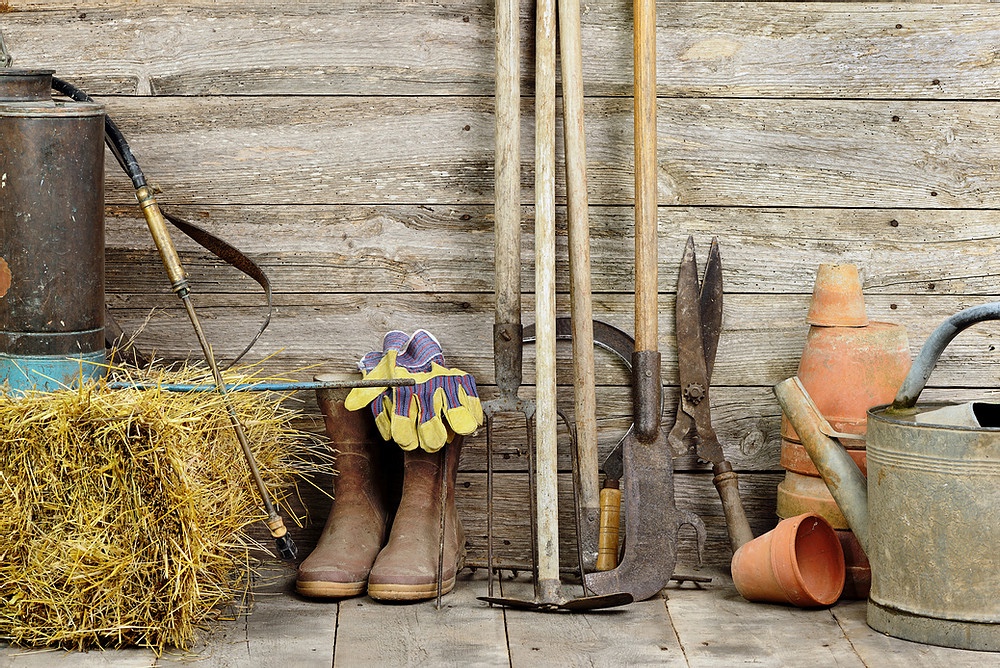Having knowledge of how to properly maintain and use garden tools will extend their life, help prevent personal injury, and enhance your gardening enjoyment.

Wooden parts
- Any small or slight crack in a wooden handle can be repaired by wrapping the handle with tape. A glass filament tape is useful for such a job.
- Splinters in the wooden handles of rakes, hoes, and shovels can be cured by sanding the surface until it becomes smooth again; this not only protects your hands but keeps the cracks from spreading and causing the handle to break.
- Another great way to preserve a wood handle is to apply several coats of quality varnish or to paint it.
Metal parts
- Any rough or rusted surfaces should be gone over with steel wool or other abrasive, which is suitable for metal. Tools with metal edges such as shovels, hoes, rakes, or other garden tools may become nicked. The damaged Blade may be smoothed with a metal file.
- Dents may be straightened out by hammering with a mallet.
- The moving parts may need to be oiled occasionally, in order to run smoothly.
- The metal parts of the tool can be painted, with a primer coat and two coats of exterior paint. However, any metal part which goes into the ground should not be painted.
Color code your tools
Aside from preservation by paint, misplaced tools are easier to find when their handles are marked with bright colors. This makes them conspicuous if left lying on the grass: The color, therefore, should not be brown or green, but a bright contrast to the grass such as yellow, red, or white.
Storing your tools

keep tools in a dry spot as dampness could be harmful. You should wipe all tools clean of any dirt or grass before storing them. The metal parts can be coated with a mixture of petroleum jelly and light oil, to prevent rust.
Tool safety tips:
- Remember to always use the appropriate PPE when maintaining and using tools.
- Never leave tools lying around when not in use. For example, properly uncoiling a hose will prevent you from tripping or catching your foot in the coil. The points of an upturned rake can inflict painful and sometimes serious puncture wounds when stepped on, to say nothing about the possibility of the handle flying up and striking you in the face.
- Tools must not be left where their edges or point may be hidden by grass, leaves, or other material. Keep your fingers away from the blades of the lawnmower: merely striking your hand against the blades can lead to a brutal injury.
Properly caring and using your garden tools will help them last year after year!

